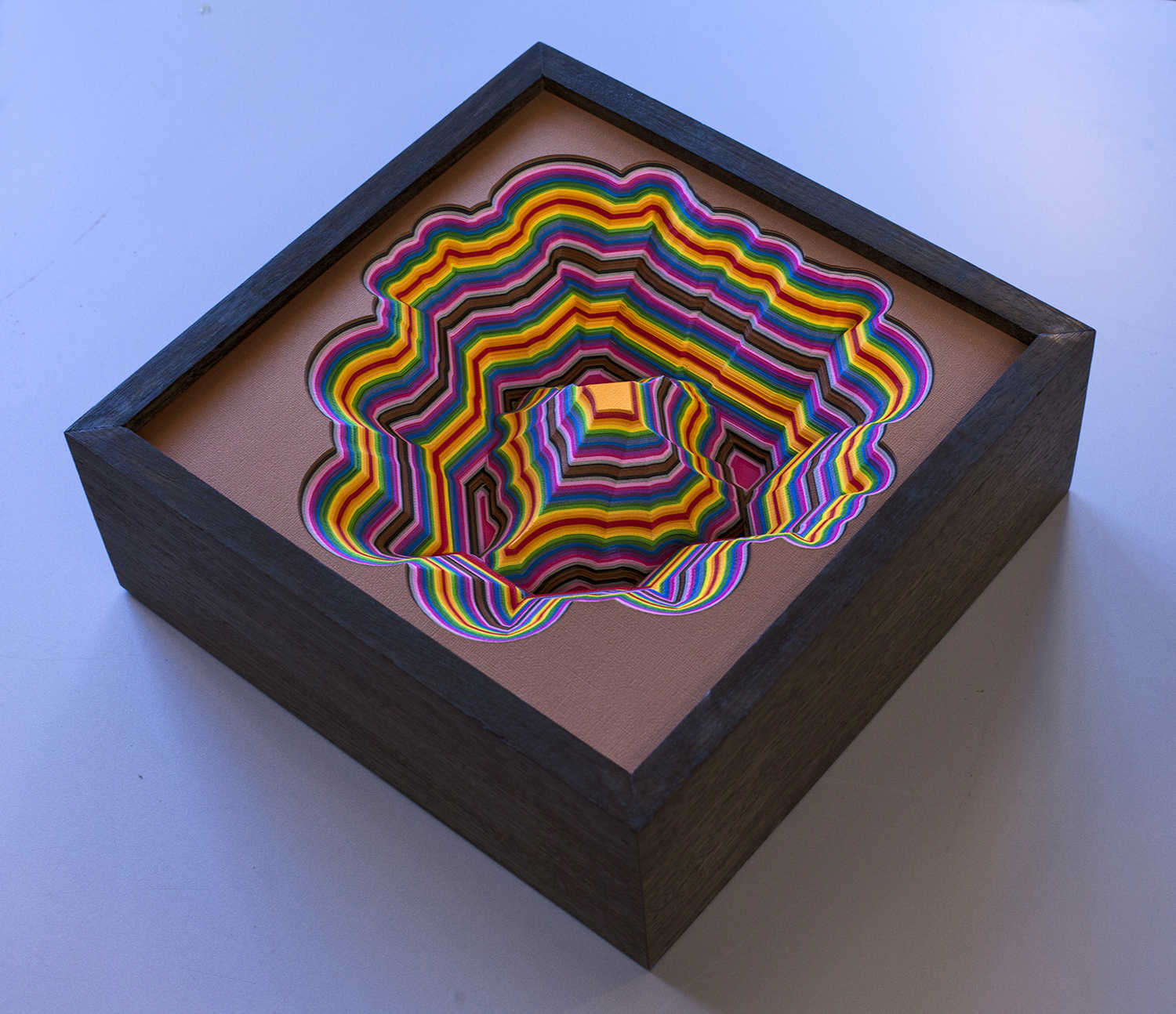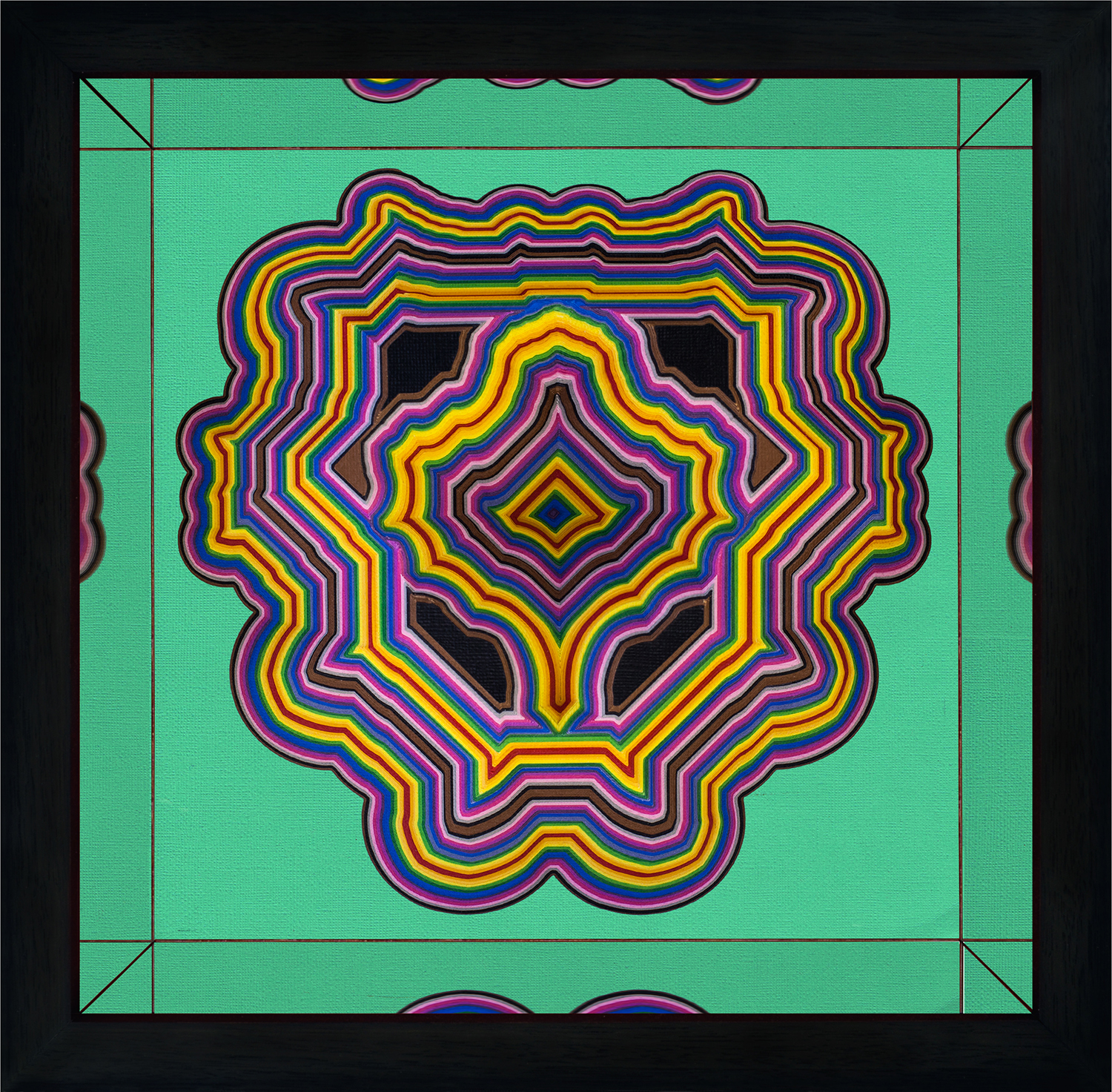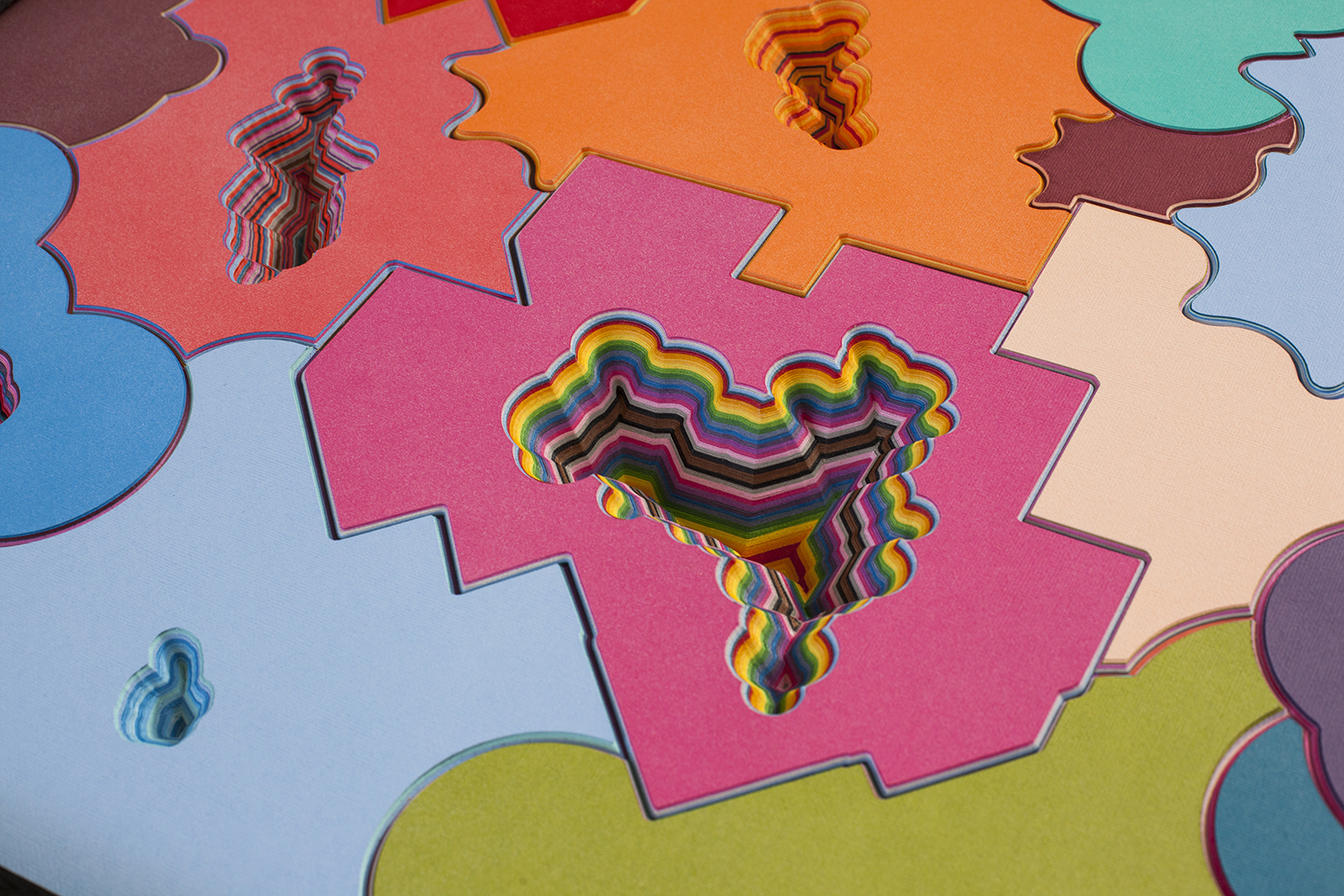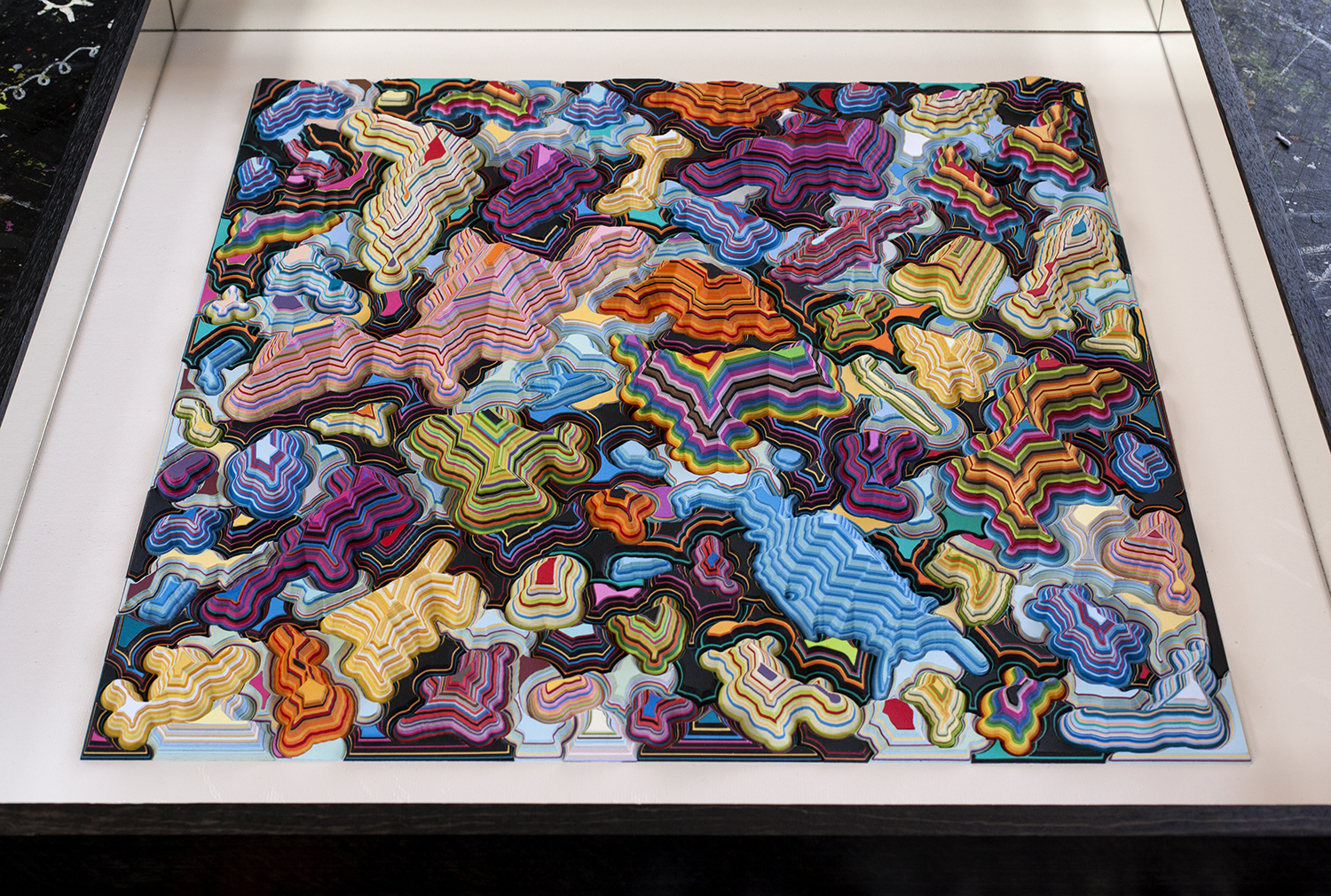






















Below is the catalogue essay for the exhibition- Something terrain by Owen Craven.
Jacob Leary is an artist whose practice spans a range of different mediums and outputs –including painting, drawing, printing-making and assemblage. The common thread that weaves through Leary’s practice is a fascination with complex systems of organisation in both the physical and digital worlds. In his latest body of work, Something Terrain, Leary creates a series of paper cut sculptural assemblages that continue his exploration of these interests to create sculptural worlds of colour, form and density.
Leary’s works are composed through an intense and laborious process that combines digital drawing with more conventional modes of hand-crafted assemblage and collage. The sculptures he creates are reminiscent of topographic land masses – mountains of geometric forms undulating in a mass of exploding colour. The works start as two dimensional shapes or “territories” as he calls them but grow into worlds based on patterns and algorithmic systems that inform the artistic process of composition.
Underpinning the conceptual rigour of Leary’s approach to his art-making is a fascination with the “nature of organisation – different systems of organisation; processes of organisation and how we understand it”, he says. Leary is influenced by the technological processes of software such as Adobe Photoshop and how these digital tools are used to build and create virtual worlds. By combining the algorithmic process with an organic or intuitive artistic approach, Leary’s paper cut sculptures grow into extruding and submerging three-dimensional worlds.
Leary’s artworks are very physical. Each work is composed of a dense series of layered forms and colours. As the layers build upwards – creating both negative and positive spaces – he creates a diorama-like sculpture that is reminiscent of some science fiction land. They’re pixelated in form and speak to a higher conceptual approach. He likes to create worlds that “mimic and highlight processes inherent within contemporary existence and technological growth, plus many other things” he explains. The worlds he creates become a translation of a digital language into a physical and alluring object.
These worlds can seem, at first glance, like chaotic colour-masses but on closer investigation what becomes evident is a hyper-ordered landscape of colour and texture. Leary describes his practice as “an absurd collection of maps. Not so much as something that can be used as a source of navigation, but more as someone caught in the process of attempting to capture some kind of representation of space travel.” The sculptures are a mapping of his investigations and translations of that which captures his attention.
In mapping out his thoughts, the artworks Leary creates are a visual rendering of ideas investigating complex and varied themes of process and organisation, science and algorithms, cultural memes and philosophical constructs. But while there is a dense layering of conceptual rigour behind Leary’s practice, the sculptures are entirely accessible and engaging. Each work is lively and alluring, colour and form drawing viewers into the works to take them on an immersive, visual journey.